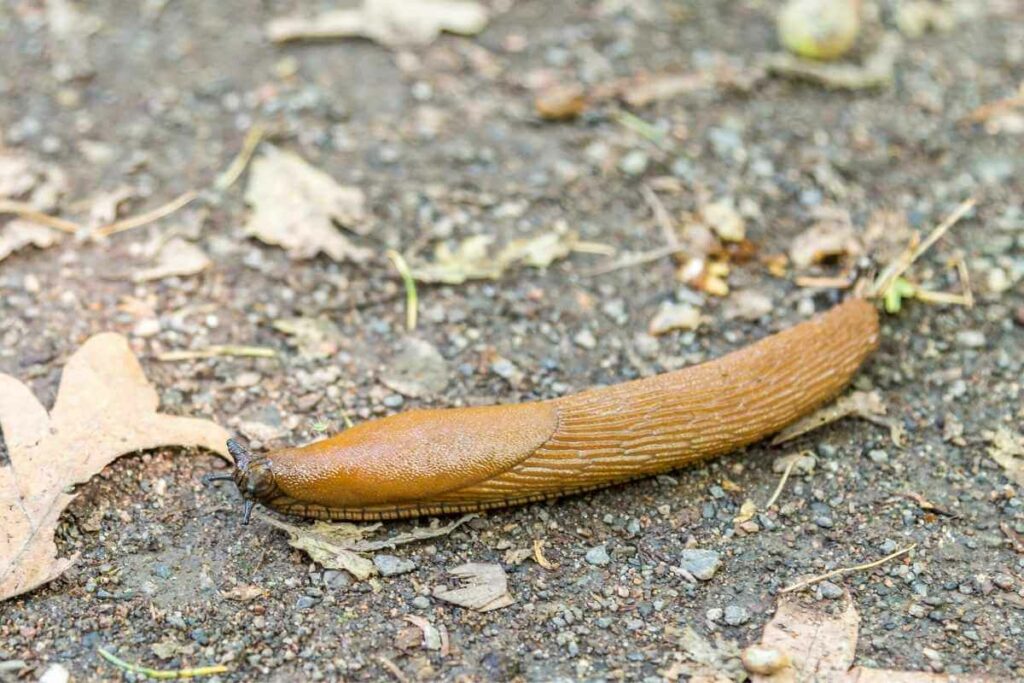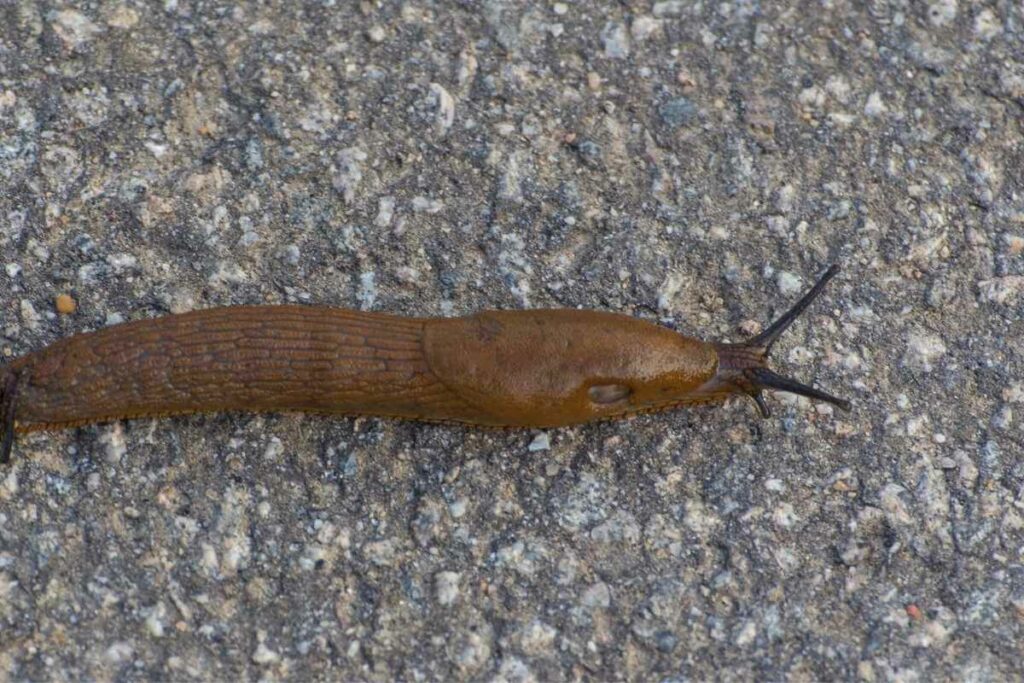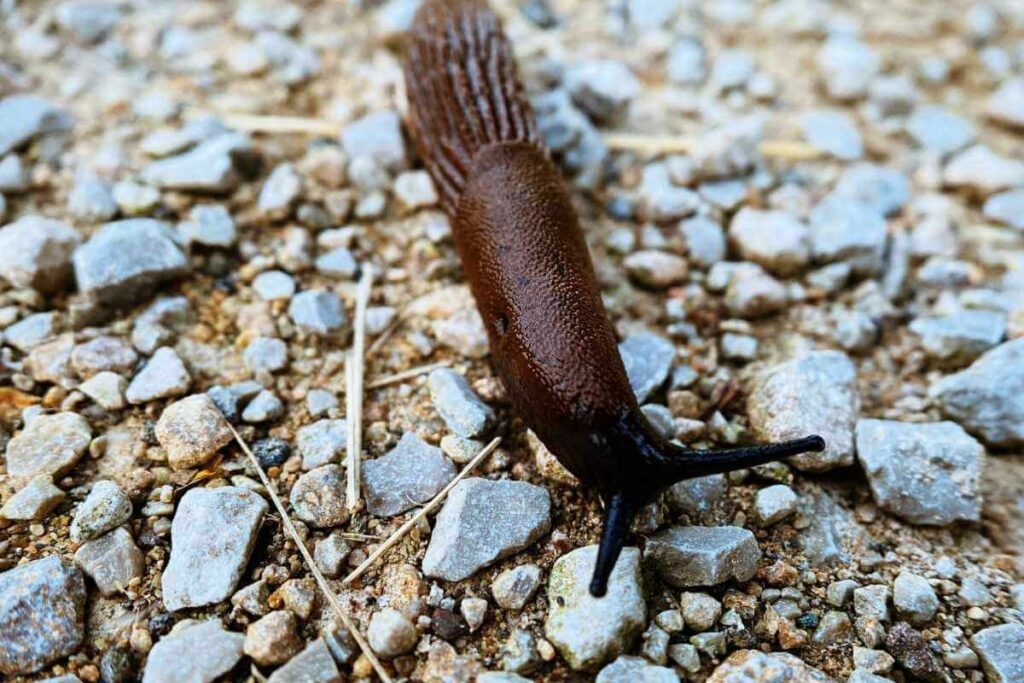As invertebrates, slugs do not have a backbone and are part of the 96% of living creatures that are classified as invertebrates.
Slugs certainly aren’t welcome residents in most gardens and their slimy soft bodies probably put people off from taking a closer look at their anatomical features.
But, these gastropod molluscs without a shell are interesting creepy crawlies and very different from the large families of insect invertebrates.
In this article, we will explore some fascinating features of the humble slug and how you can tackle them if your garden-grown fruits and veggies are in their sights.
The Slug Family Is a Large One
The name “slug” can be used to refer to and terrestrial gastropod mollusc that doesn’t have a shell, or has its shell internalised.
Did You Know? There are 48 known slug species (40 in the UK), but they all share a similar body structure, physiology and reproductive methods.
Key Anatomical Features of the Common Slug
As invertebrates, slugs lack a cranium, spinal cord, musculoskeletal and cardiovascular systems.

But they are more than capable of expressing all the characteristics of living organisms.
They are just adapted differently for breathing, movement, feeding, excretion, reproduction and other essential functions.
Let’s take a look.
The Soft Elongated Body of the Slug Hides Some Interesting Anatomy
- Tentacles are the soft retractable projections on the head of the slug. The two pairs of feelers seen on most land slugs include light sensing tentacles, complete with eyespots, and a lower pair that extend downward to be used for smelling and navigation.
- A Mouth. Believe it or not, slugs have a mouth, jaws and teeth which they use for feeding. They carry thousands of minute teeth, arranged in a flexible band called a radula. Like a circular saw these teeth cut into and rasp off food that can then be ingested by the slug.
- The mantle is a saddle-like structure on the top of the slug, behind the head. Interestingly, the anus and genital openings are beneath this. They arrive in this unusual location because of a developmental phenomenon called torsion, where the bulk of the internal organs rotate through 180 degrees. Slugs only have one lung and to the right of the mantel is the pneumostome, a respiratory pore that the slug uses to breathe.
- The keel is a ridge that is present in some slug species. Like the keel of a boat, it runs along the length of its back and down to its tail.
- The tail is the remainder of the body of the slug, beyond the mantle.
- The foot is the flat expansive bottom of the slug on which it moves. The name gastropod means “stomach foot”. In some slug species it has some crimping, known as the foot fringe. Slugs generate waves of muscular contractions along the foot to enable them to glide on the copious slime that they generate. The mucus, mentioned below, is secreted to prevent damage to the foot.
- A vestigial shell may also be present, though it is usually internalized and used as a mineral store.
Though Slugs Do Not Have Backbones, They Still Possess a Competent Nervous System
Without a spine, slugs lack a spinal cord, but efficient nervous system communication is achieved by distributed networks of interconnected ganglia (collections of nerve cells).

The elongated axons of these nerve cells are used for the nervous system signalling and communication that the slug requires to breathe, move, feed and respond to stimuli.
Silvery Slime Trail You See on Your Patio after Rain Is Essential to a Slugs Survival
Slugs have extremely high water content and due to the absence of a shell are reliant on continuingly protecting themselves from desiccation with the mucus they generate which consists of water and mineral salts.
Slugs produce two different types of hygroscopic, or moisture-retaining mucus:
- The first, a thin and watery, mucus is spread from the centre of the foot of the slug to the edges of the foot. The mucus also contains tiny fibres that help give the slug traction as it moves as well as molecules that can be detected by other slugs which may be looking for a mate.
- The second which is more viscous, coats the entire body of the slug, helping to prevent it from drying out. This mucus gives the slug its characteristic sliminess and can make it a slippery meal for birds and other predators. The stickiness of the slime can also be put to use in reproduction as these hermaphrodite creatures are held together to exchange eggs and sperm.
Put Your Knowledge of Slug Anatomy and Physiology to Good Use to Tackle Pest Slugs Organically
If you want to reduce the slug population that is targeting the tender, leafy growth in your garden.
There are a variety of simple strategies that you can implement that simply exploit the slugs physical features and make your garden inhospitable to them.
Here are some ideas to try.
Attract Slugs and Hand-pick Them
The most obvious method of dealing with slugs is to simply remove them when you see them.
The job can be made easier by attracting them to a specific area, so you can grab many at once.
Try This: Grapefruit skins, beer, old lettuce leaves and even pet food can be used to attract slugs and even trap them for collection.
Target Slug Hiding Places
Because slugs need moisture, they will tend to hide out in dark and damp locations in your garden until the evening.

Don’t make it easy for them by leaving piles of rotting leaves, old logs or boards or upturned watering cans or planters.
A clean clear garden will mean that they are more exposed to their natural predators too.
Reach for the Table Salt
Salt is an old, but effective method of tackling slugs.
It will quickly kill them as they quickly dehydrate. Use salt to create a border around your vegetable beds that the slugs cannot cross.
Salt cannot be excessively used as it is not so great for the soil.
Create Physical Barriers
Coffee grounds as an effective slug deterrent as they create an abrasive surface for the slug to travel over and the caffeine in them is a potent neurotoxin.
Copper also is a strong deterrent of slugs and is thought to cause a reaction akin to an electric shock when the slug slime trail comes into contact with it.
Rounding Up
Slugs are widely regarded as pests due to their feeding on garden plants, fruits and vegetables.
However, the majority of slugs work will involve beneficial contributions to decomposition and biodegradation in your garden.
An insightful and chemical-free approach to tackling these invertebrates does require some extra effort, but the rewards of a healthy garden ecosystem are well worth it.
Also Useful
- Do Caterpillars Have Legs?
- Do Ladybugs Eat Ants?
- Do Centipedes Have 100 Legs? Why Do They Have so Many Legs?
